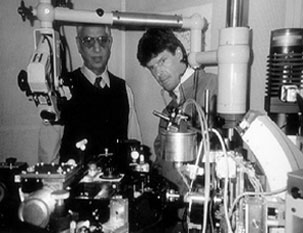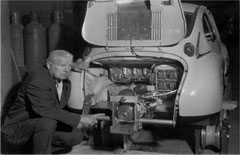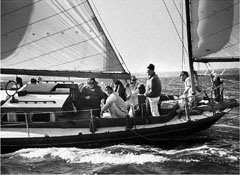EMIL CAPITA - FOUNDER

Emil R. Capita (1900-1986) suffered with a hearing disability until Dr. Jules G.
Waltner, an otolaryngologist at Columbia Presbyterian Hospital in New York,
successfully restored his ability to hear. This recovery inspired Emil, and in
1985 he formed the Emil Capita Charitable Foundation, a 501(c)(3) nonprofit
organization dedicated to funding hearing research at Columbia University. With
modest endowment from its founder, the Foundation funded a long-term project to
design and construct a heterodyne interferometer microscope. The microscope
served continual research purposes in a Columbia University lab under the
direction of Shyam M. Khanna, Ph.D.
The Transformation
 By 2004,
the majority of the Emil R. Capita Charitable Foundation board had agreed to
form a new 501(c)(3) nonprofit corporation. With the goal of providing financial
support to scientists conducting novel hearing research – regardless of
university or nonprofit research facility affiliation – Capita Foundation
was born.
By 2004,
the majority of the Emil R. Capita Charitable Foundation board had agreed to
form a new 501(c)(3) nonprofit corporation. With the goal of providing financial
support to scientists conducting novel hearing research – regardless of
university or nonprofit research facility affiliation – Capita Foundation
was born.
Using a combination of networking and grant advertising publications, Capita
Foundation has funded some of the most cutting-edge hearing research projects in
the country with $10K to $40K grants. Each year, we continue to fund hearing
research projects, prioritizing those with high clinical application potential.
More about Emil R. Capita
Emil R. Capita, a self-educated electrical engineer, was indirectly involved
with many of the life-changing inventions during the past century. Projects Emil
touched include devising a method of melting large quantities of uranium, which
enabled the United States of America to win the nuclear arms race, and the
design and production of one of the first Epitaxio Reactors used by Texas
Instruments to fabricate some of the first silicon wafers for computer chips.
Emil spent much of his life at his North Bergen, New Jersey-based company, Ecco
High Frequency Corp. There, he designed and produced high-frequency production
heating equipment for melting precious metals and tinkered with other ideas,
including a 1966 electric car that traveled over 60 MPH.
Emil, often buried under piles of blueprints, mathematical tablets, drafting
instruments, and so on, would cast aside everything at the mention of the word
"boat." Emil, or "Capy" as he was called by friends and associates, had a
passion for yacht racing. 
He owned several racing sailboats, including the Hi-Q II designed by Phill
Rhodes. He had a monel frame structure and centerboard case built in his North
Bergen factory and a double-planked mahogany hull built by Seth Pearson in Old
Saybrook, CT.